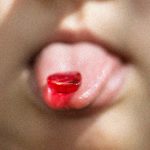In 1856, an amateur chemist named William Henry Perkin mixed a batch of chemicals that he hoped, in vain, would yield the malaria drug quinine. When Perkin’s failed experiment turned purple, a hue so vivid that it could stain silks without fading, he realized he’d stumbled upon a different marvel of modernity: a commercially viable synthetic dye, the first of a new generation of chemicals that would revolutionize the way humans colored their clothes and, soon after, their food.
The edible versions of the chemicals, in particular, were a



